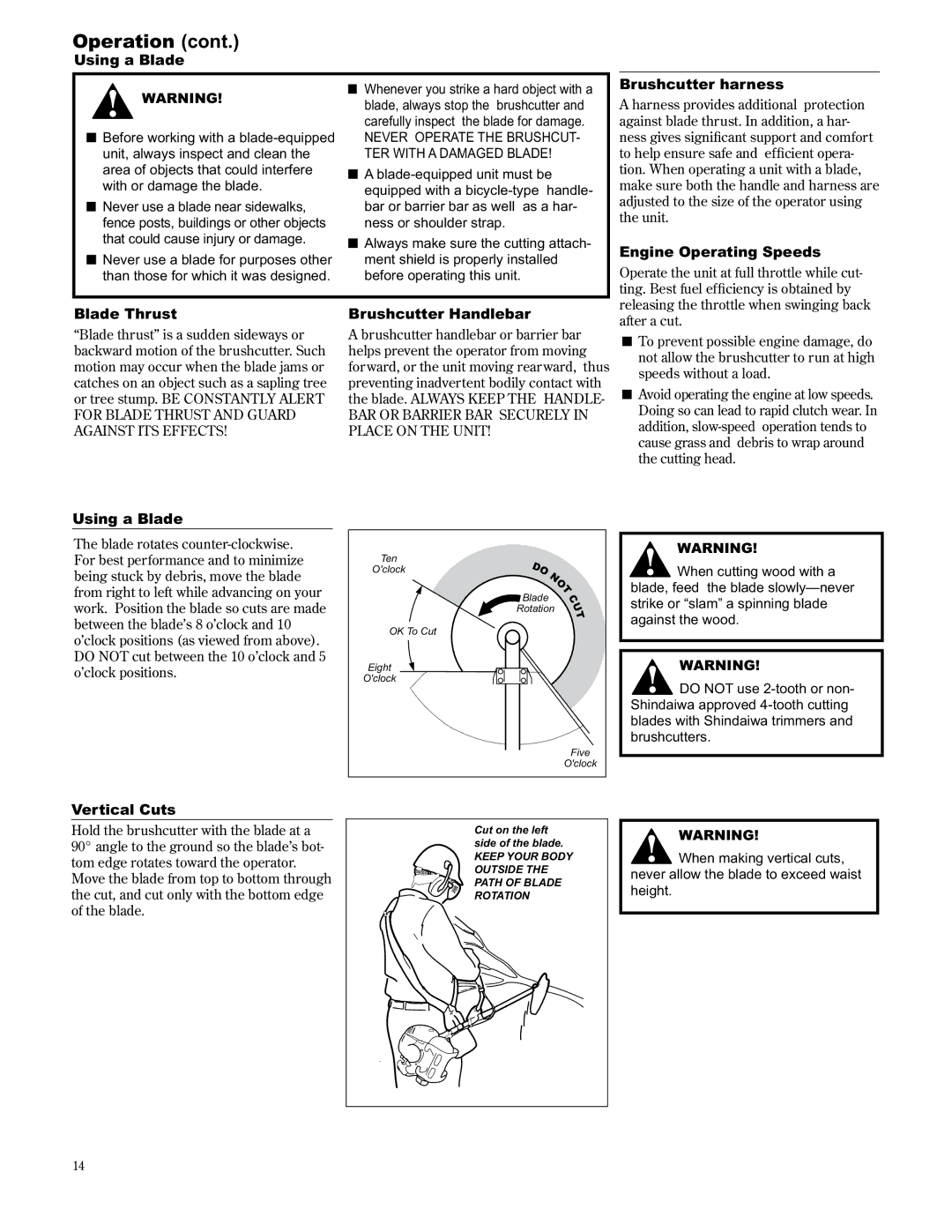T3410X/EVC, T3410/EVC, 89301 specifications
Shindaiwa is renowned for its durable and high-performing outdoor power equipment, and models like the Shindaiwa 89301, T3410/EVC, and T3410X/EVC highlight this reputation. These models are designed for both commercial and residential use, featuring advanced technologies that enhance performance and user experience.The Shindaiwa 89301 is a versatile and powerful equipment that excels in various landscaping tasks. Its most notable feature is its robust engine, which provides exceptional power while maintaining fuel efficiency. This model incorporates Shindaiwa's advanced Clean Air Technology, which significantly reduces emissions, making it environmentally friendly and compliant with stringent regulations. The ergonomic design of the handle ensures comfort during prolonged use, reducing operator fatigue.
Moving on to the T3410/EVC, this model is primarily a brushcutter, known for its reliability and ease of use. It is equipped with a high-quality cutting system that delivers precise cuts and efficient grass clearing. The T3410/EVC features a powerful engine that provides strong torque at low RPMs, allowing for effective cutting through thick grass and weeds. One of the standout technologies in this unit is the E-Vac system, which enhances airflow in the cutting head for improved debris discharge. This ensures a clean and efficient cut, reducing the time spent on yard work.
Meanwhile, the T3410X/EVC model pushes the boundaries even further with additional capabilities. It features a more advanced ignition system that offers quicker starts and better overall performance in challenging conditions. This model also boasts a reinforced frame and components designed for demanding tasks, making it ideal for professionals who require reliability and performance. Just like the T3410/EVC, the T3410X/EVC is integrated with an advanced vibration dampening system, enhancing user comfort and control during operations.
Both models' user-friendly controls and lightweight design make them accessible for both seasoned professionals and casual users. Whether you are tackling a large commercial property or maintaining your backyard, Shindaiwa’s models 89301, T3410/EVC, and T3410X/EVC deliver exceptional performance, durability, and innovation, ensuring that your outdoor projects are completed efficiently and effectively. With a combination of power, technology, and ergonomic design, these models stand out in the competitive landscape of outdoor power equipment.

